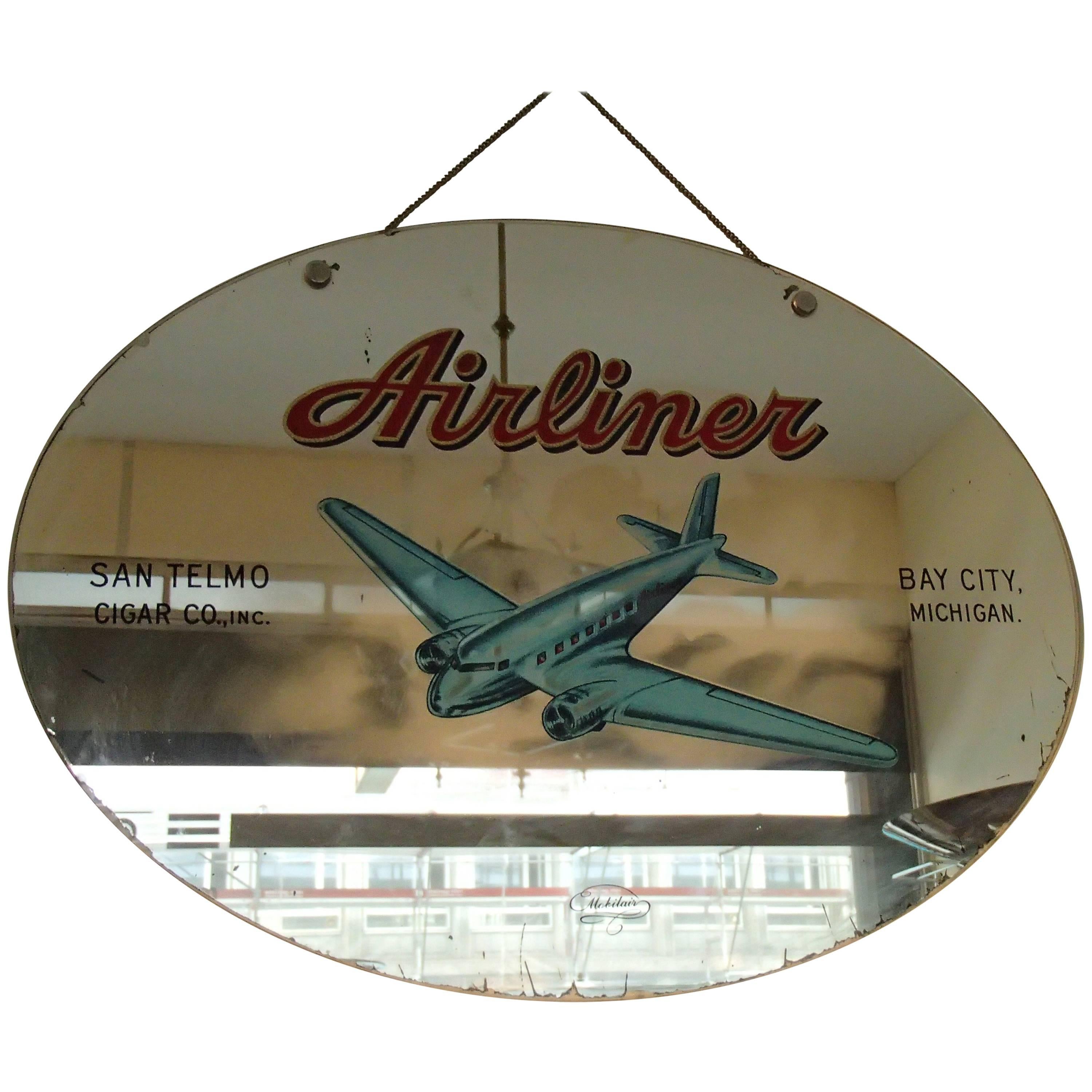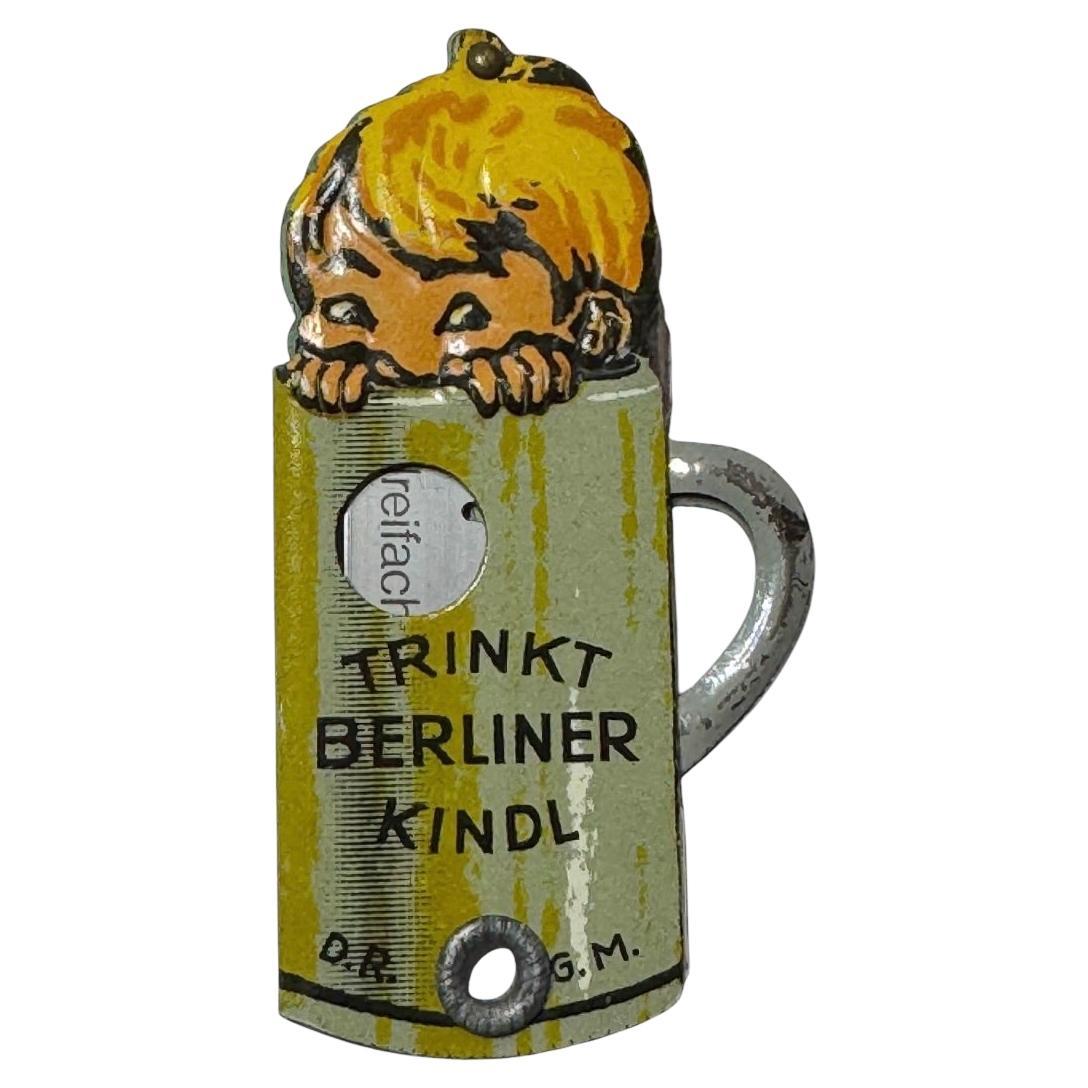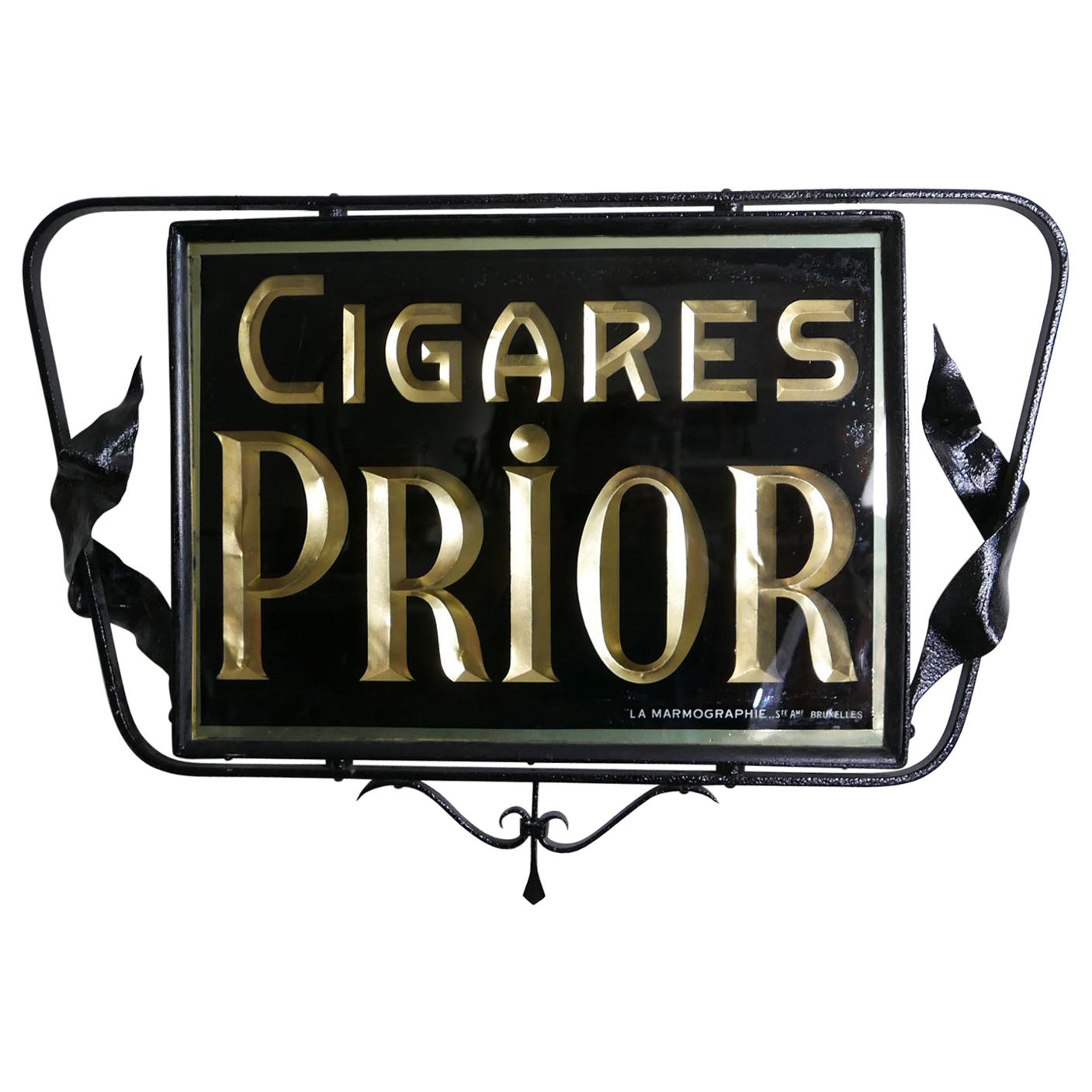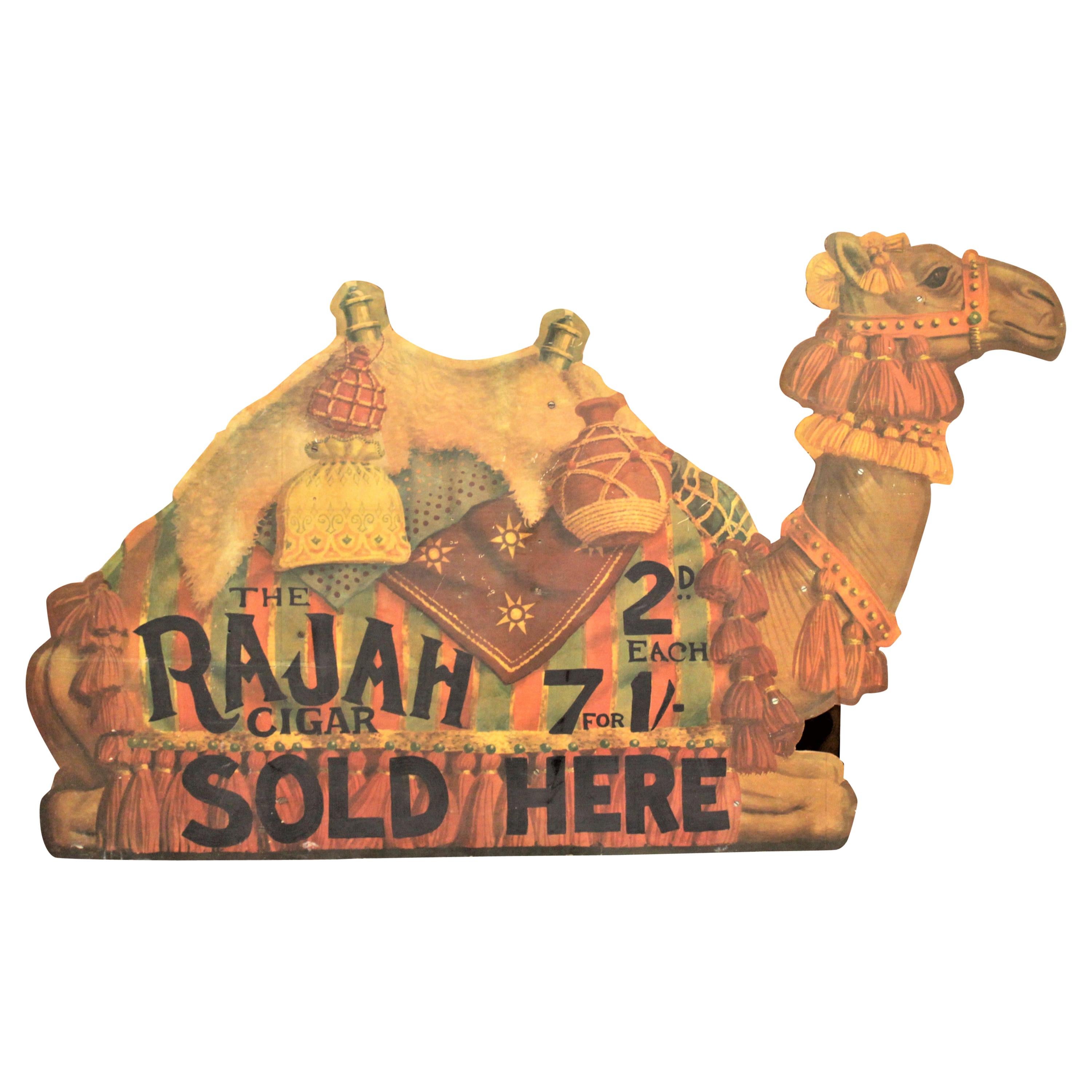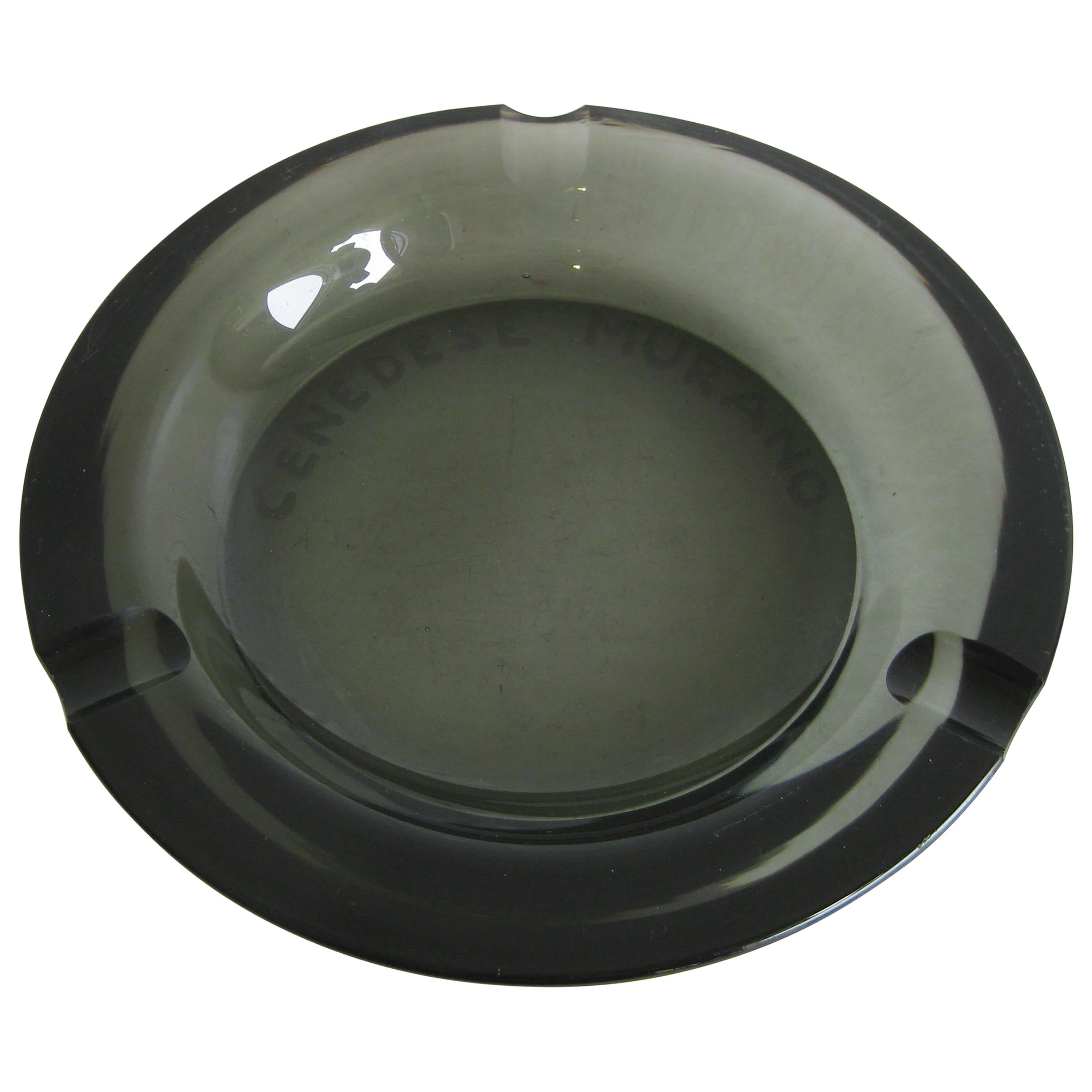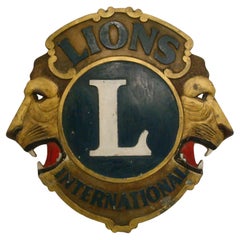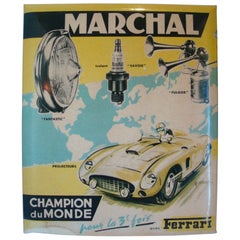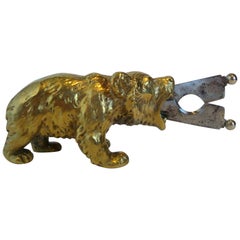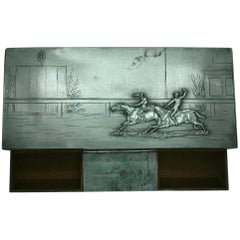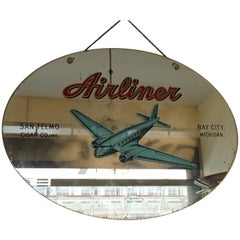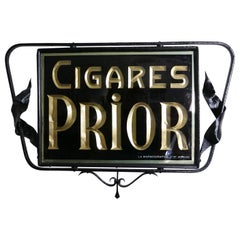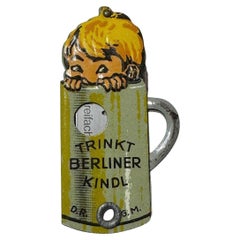Artículos similares a Giant Advertising Cigar Statue / Bar Lounge / Cigars
¿Quieres más imágenes o vídeos?
Solicita imágenes o vídeos adicionales al vendedor
1 de 20
Giant Advertising Cigar Statue / Bar Lounge / Cigars
Acerca del artículo
Giant Advertising Cigar Statue / Bar Lounge / Cigars.
Large Cigar Tobacco Trade Sign Cigars, made of wood with an iron and brass support. Fantastic Folk Art Sculpture.
This is a Giant / Big Cigar Advertising Sign Counters top sign.
This sign would date to late 30’s.
We have specialized in the sale of Art Deco and Art Nouveau and Vintage styles since 1995. If you have any questions we are at your disposal. Pushing the button that reads 'View All From Seller'. And you can see more objects to the style for sale. Why are there so many antiques in Argentina?
In the 1880 – 1940 there was a grate wave of immigration encouraged by the periods of war that were taking place. 1st World War took place between 1914 and 1918 2nd World War took place between 1939 and 1945 The immigrants options were New York or Buenos Aires. Tickets were cheap and in Buenos Aires they were welcomed with open arms, as it was a country where everything was still to be done. Argentina was the country of new opportunities, labour was needed and religious freedom was assured, in many cases the of the family travel first until they were settled and then the rest of the family members join them. In the immigrant museum “Ellis Island Immigrant Building” in New York you can se the promotional posters of the boats that would take them to a new life. Between the years 1895 and 1896, Argentina had the highest DGP (gross domestic product) per capita in the world according to the Maddison Historical Statistics index, this situation arose due to the large amount of food being exported to European countries, which were at war. The Argentinean ships left the port of Buenos Aires with food, but they returned with furniture, clothes and construction elements, (it´s common to see this the old buildings of the historic neighbourhood of San Telmo, the beams with the inscription “Made in England)”, as well as many markets that were built in Buenos Aires, such us the San Telmo Market, whose structure was brought by ship and afterwards assembled in 900 Defensa Street. With the great influence of European immigrants living in the country, the children of the upper classes travelled to study in France, resulting in the inauguration of “La Maison Argentinienne”, on 27th of June 1928, in the international city of Paris, which hosted many Argentinians that were studying in Frace. It´s the fourth house to be built after France, Canada and Belgium, being the first Spanish-speaking one. Still in place today (17 Bd Jourdan, 75014, Paris, France). Many of the children of these wealthy families who attended international art exhibitions, museums and art courses abroad, took a keen interest in the European style. This is why Buenos Aires was at the time referred as “The Paris of South America”. Between the years 1890 and 1920 more than a hundred Palaces were built on Alvear Avenue the most exclusive avenue in Buenos Aires. Today some of these palaces have been transformed into museums, hotels and embassies. In the year 1936, the Kavanagh building was inaugurated, it was the tallest reinforced concrete building in South America. During 1994 the American Society of Civil Engineers distinguished it as an “international engineering milestone”, and it´s now considered a World Heritage of Modern Architecture. At the time was common to hire foreign architects such as Le Corbusier, who visited Buenos Aires/Argentina in 1929 and in 1948 he drew up the blueprints for a house built in La Plata City (which was declared a World Heritage Site). In 1947, the Hungarian architect Marcelo Breuer designed “Parador Ariston” in the seaside city of Mar del Plata. After an Argentinean student at Harvard University convinced him to come to Argentina. He worked on an urban development project in the Casa Amarilla, area of La Boca. The Ukrainian architect, Vladimiro Acosta, arrives in Argentina in 1928 and worked as an architect until que moved to Brazil. Antonio Bonet, a Spanish architect who worked with Le Corbusier in Paris, arrives in Argentina in 1937, where he carried out several architectural works and in 1938 designs the well-known BFK chair. Andres Kálnay, of Hungarian origin, made around 120 architectural masterpieces, among which the former Munich brewery stands out, he even made the furniture’s design. The German architect, Walter Gropius, director of the Bauhaus, lived in Argentina, where he wrote articles for “Sur” magazine and founded in Buenos Aires, an architectural firm with Franz Möller, who was also an architect, where he built two houses. At the same time several famous designers decided to immigrate to Argentina, among them we can find the well-known French designer, Jean-Michel Frank, who arrived in the country in 1940 and also worked for the Rockefeller family. Special pieces were made, which were sold exclusively in the country, such as the well-known German company “WMF”, who sold their products by catalogue, which were chosen by the ladies of high society in the list of wedding gifts, as well as the pieces designed by Christofle. The Swiss sculptor Alberto Giacometti, made special pieces for Argentinean mansions. In 1904 the first Jansen branch outside Paris was established in Buenos Aires, as the Argentinean clientele demanded a large amount of furniture, from the end of the 19th century to the mid-20th century. In 1970, the brand Rigolleau Argentina made pieces authorised by Lalique. The brands Maple and Thompson also set up shop in the country. The French plastic artist, Marcel Duchamp moved to Argentina in 1918-1919. Glass signed Gallé, Charder, Leverre, Schneider, Muller and other French firms. They were bought in flower shops and were given to ladies with beautiful floral arrangements. Some furniture manufacturers travelled to international fairs and bough the patterns to produce the furniture in Argentina, such as the furniture firm Englander and Bonta, who bought the patterns in Italy. It is worth mentioning that in Argentina we have the largest community of Italians outside of Italy, as it is estimated that 70 percent of the inhabitants have at least one Italian descendant, followed by Spanish immigrants. The most Important furniture stores in Argentina: Comte is founded in 1934 (under the direct management of Jean Michel Frank in 1940). Nordiska (Swedish company established in 1934). Churba in 1960, a company that brought foreign designers to present their furniture in the country: Denmark: (Arne Jacobsen, Finn Juhl, Bender Madsen, Ejner Larsen, Poul Kjaerholm, Hans Wegner) Sweden: (Hans Agne Jakobsson, Gustavsberg) United States: (Herman Miller) Finland: (Lisa Johansson, Folke Arstrom, Tapio Wirkkala, Alvar Aalto, Timo Sarpaneva) Swedish Factory: (Orrefors) Italy: (Littala, Vico Magistretti, Emma Gismondi, Gae Aulenti, Angelo Mangiarotti, Elio Martinelli, Gianna Celada, Angelo Mangiarotti, Mario Bellini, Carlo Scarpa) Finland: (Olivia Toikka) Plata Lappas (Lappas Silver): a goldsmith shop founded in 1887 in Argentina by Alcibiades Lappas of Greek origin. In 2019, in Argentina took place “the Art Deco world congress” . Argentina currently has more than 100 Art Deco buildings and another 90 Art Nouveau buildings throughout the city of Buenos Aires. Argentina is a country that has not been involved in many wars, which is why it has been a refuge for works of art and antiques from different periods of time, unlike European countries. That is way many collectors, museums and antique dealers from all over the world visit it, you should not miss the opportunity to visit this great country.
- Dimensiones:Altura: 27 cm (10,63 in)Anchura: 70 cm (27,56 in)Profundidad: 16 cm (6,3 in)
- Estilo:Moderno de mediados de siglo (Del período)
- Materiales y técnicas:
- Lugar de origen:
- Época:
- Fecha de fabricación:1930´s
- Estado:Desgaste acorde con la edad y el uso.
- Ubicación del vendedor:Buenos Aires, AR
- Número de referencia:1stDibs: LU2027345313562
Sobre el vendedor
4,9
Vendedor profesional aprobado
Todos los vendedores superan estrictas normas de autenticidad y confiabilidad
Establecido en 2002
Vendedor de 1stDibs desde 2016
318 ventas en 1stDibs
Tiempo de respuesta usual: 1 hora
- EnvíoRecuperando presupuesto…Envío desde: Buenos Aires, Argentina
- Política de devolución
Partes de esta página se han traducido automáticamente. 1stDibs no puede garantizar la exactitud de las traducciones. El inglés es el idioma predeterminado de este sitio web.
Garantía de autenticidad
En el improbable caso de que haya algún problema con la autenticidad de un artículo, ponte en contacto con nosotros en un plazo de 1 año para recibir un reembolso total. DetallesGarantía de devolución de dinero
Si tu artículo no es como se describe, sufre daños durante el transporte o no llega, ponte en contacto con nosotros en un plazo de 7 días para recibir un reembolso total. DetallesCancelación dentro de las 24 horas
Tienes un período de gracia de 24 horas para reconsiderar tu compra, sin preguntas.Vendedores profesionales aprobados
Nuestros vendedores de primera clase deben cumplir estrictos estándares de servicio para mantener la integridad de nuestros anuncios.Garantía de igualación de precios
Si encuentras que un vendedor publicó el mismo artículo por un precio menor en otro lado, igualaremos ese precio.Entrega global de confianza
Nuestra red de transporte de primera ofrece opciones de envío especializado en todo el mundo, que incluye envío personalizado.Más de este vendedor
Ver todoPlaca metálica vintage del Club de Leones Internacional / Cartel publicitario pintado, años 40
Placa / Letrero Vintage Antique Lion's Club International con pintura a mano en su mayor parte original. Tiene algo de desgaste por la edad, pero en general está en muy buenas condic...
Categoría
mediados del siglo XX, Estadounidense, Moderno de mediados de siglo, Art...
Materiales
Metal
Cartel publicitario de mostrador de accesorios Marchal Ferrari 375 Plus, ca. 1950
Cartel publicitario del mostrador de accesorios Marchal Ferrari, ca. 1950, litografía en color de celuloide sobre soporte de cartulina.
El letrero se fabricó cuando Marchal (piezas ...
Categoría
Vintage, Década de 1950, Francés, Moderno de mediados de siglo, Carteles
Materiales
Otro
Cortapuros austriaco de bronce con forma de oso, ca. 1900
Cortapuros de sobremesa con escultura de oso de bronce macizo fabricado en Austria. Las cuchillas de acero con acción de tijera se pueden extraer de la boca del oso rugiente. Excelen...
Categoría
principios del siglo XX, Austríaco, Art Decó, Accesorios para tabaco
Materiales
Bronce
Caja para fumar puros de carreras de caballos de escritorio, hacia 1900
Caja de puros ecuestre con espacio para cerillas. Una pieza de escritorio perfecta.
Grabado con caballos de carreras.
Categoría
principios del siglo XX, Estadounidense, Art Nouveau, Accesorios para ta...
Materiales
Latón
Tienda / Comercio de Cigarros Arte Popular Letrero tallado en madera. c 1900
Cartel de madera "CIGARS" de arte popular americano de los años 20.
Gran letrero antiguo de comercio de tienda. Madera cortada en forma de puro. Con letras en pintura dorada.
En buen...
Categoría
principios del siglo XX, Estadounidense, Arte popular, Señales
Materiales
Madera
Pitillera Art Decó de Shagreen y Plata / Pitillera Pequeña
Exquisita pitillera de piel de raya con cuello de plata. Se expande para diferentes longitudes de puros pequeños o cigarrillos.
Fabricado en el Reino Unido en los años 1900-1920. Ti...
Categoría
principios del siglo XX, Británico, Art Decó, Accesorios para tabaco
Materiales
Plata esterlina
1200 US$ Precio de venta
Descuento del 20 %
También te puede gustar
Espejo publicitario de mediados de siglo "Airliner" San Telmo Cigar Co Bay City Michigan
Espejo publicitario de mediados de siglo "Airliner" San Telmo Cigar Co. Bay City Michigan en cadena
Algo de desgaste en los bordes.
Categoría
Vintage, Década de 1950, Estadounidense, Moderno de mediados de siglo, O...
Materiales
Espejo
Cartel Colgante de Publicidad de Cigarros Pintado al Revés por las Dos Caras
Letrero de doble cara para puros de principios del siglo XX, procedente de Bélgica.
En su caja original.
Fabricado por "La marmographie St Amf, Bruxelles", fundada hacia 1910.
...
Categoría
Vintage, Década de 1920, Belga, Accesorios para tabaco
Materiales
Metal
Cortapuros de bolsillo publicitario de cerveza Berlin Kindl Antiguo, alemán, años 30
Un cortapuros publicitario de cerveza Kindl (Child) de Berlín. Algo de desgaste con una bonita pátina, pero esto es la vejez. Fabricado con chapa litografiada y una cuchilla de afeit...
Categoría
Vintage, Década de 1930, Alemán, Accesorios para tabaco
Materiales
Metal
Letrero vintage de cristal pintado al revés para puros habanos LaPrimadora, Publicidad
Cartel Vintage de Cristal Pintado al Reverso LaPrimadora Cigarros Habanos
Se ofrece a la venta un rótulo de cristal pintado al revés de gran tamaño que puede ser un rótulo comercia...
Categoría
finales del siglo XX, Accesorios para tabaco
Materiales
Vidrio artístico, Madera dorada
Gran cartel publicitario de mediados de siglo para estancos Gran Habano Rajah
Se supone que este gran y colorido cartel, del tamaño de una pancarta, se fabricó en Estados Unidos para la Gran Habano Cigar Company de Honduras en la década de 1960 para anunciar s...
Categoría
mediados del siglo XX, Estadounidense, Raj británico, Recuerdos históricos
Materiales
Papel
Cenicero publicitario de cristal de Murano modernista italiano Cenedese Barbini
Por Cenedese
Cenicero muy singular de cristal de Murano, circa años 50. Parece que podría haber sido una pieza publicitaria. Firmado en la parte inferior. El color es gris ahumado. En muy buen es...
Categoría
mediados del siglo XX, Italiano, Accesorios para tabaco
Materiales
Vidrio artístico
